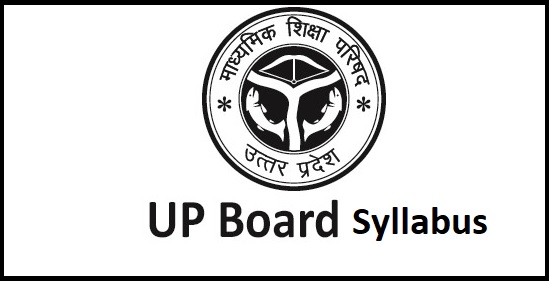Maharashtra Board HSC Geology Syllabus 2024-25

Maharashtra Board has released HSC Geology syllabus for the academic session 2024-25. Students appearing in the board exam may follow this page to know full Maharashtra Board Class 11 and 12 Geology syllabus.
Further, they may also download the syllabus in pdf format. If you are running through certain concern then let us know through the comment box below.
Maharashtra Board HSC Geology Syllabus 2024-25
We are providing below the full class 11 and 12 syllabus for Geology:
Maharashtra Board Class 11 Geology Syllabus
Class 11 Paper I
- Introduction to Geology
- Definition, importance and Interdisciplinary nature
- Branches of Geology
- The earth as a planet, Origin of the earth. Distribution and evolution of continents and oceans, Major internal structure of the earth-crust, mantle and core.
2. External processes affecting the Earth’s crust
- Weathering – types, erosion, denudation and deposition
- Soil : formation and classification
- Geological action : Running water, Glaciers, Wind, Sea waves, Ground water
3. Organization
- Organizations with reference to location and functions –
DGM, GSDA, GSI, ONGC, NIO, ISRO, CGWB, IBM, AMD
Class 11 Paper II
4. Minerology
- Definition of Mineral, Crystal, Chemical – composition and Physical properties of minerals, – such as Colour, Streak, Lustre, Cleavage, Fracture, Hardness, Form, Specific– Gravity, Radioactivity, Electricity,
- Study of rock forming mineral groups as –
- Feldspar group –
Orthoclase
- Silica group – Rock crystal,, Amethyst,
Agate,Opal
- Amphibole group –
Hornblende
- Pyroxene group –
Hypersthene
(5)Mica group
Muscovite
- Olivine group –
Olivine
- Other minerals – Calcite, Stilbite, Apophyllite
- Petrology
- Definition of rock, Three fold classification of rocks as – igneous, sedimentary and metamorphic.
- Igneous rocks – Definition, classification plutonic, hypabyssal and volcanic. Study of Granite, Gabbro, Dunite, Pegmatite, Dolerite, Rhyolite and Basalt.
- Sedimentary rocks – Processes of formation of sedimentary rocks, Study of Laterite and Bauxite, Conglomerate, Breceia, Sandstone, Shale, Limestone.
- Metamorphic rocks – Definition of metamorphism; Agents and types of metamorphism. Study of Slate, Marble, Chlorite schist, Granite gneiss
- Study of rocks used as Building material with reference to Strength, Durability, Colour, Study of Granite, Basalt, Sandstone, Limestone, Marble.
- Maharashtra
- Location – its relation with India
- Physiography – Physiographic divisions, relief features, Geological structure.
- Distribution of major rock types and their economic significance.
- Distribution of economically important minerals – varieties of Silica, Zeolites, Kyanite,Bauxite,Iron and Manganese ores, Coal, Oil and Natural gas.
Practicals
- Mineralogy
- Identification and Description of minerals – Physical properties – Colour, Streak, Lustre, Cleavage, Fracture, Hardness and Chemical composition of following mineral groups –
- Feldspar group –
- Identification and Description of minerals – Physical properties – Colour, Streak, Lustre, Cleavage, Fracture, Hardness and Chemical composition of following mineral groups –
Orthoclase
- Silica group – Rock crystal, Amethyst,
Agate, Opal
- Amphibole group –
Hornblende
- Pyroxene group –
Hypersthene
- Mica group –
Muscovite
- Olivine group –
Olivine
- Other minerals –
Calcite, Stilbite, Apophyllite
- Determination of specific gravity of Quartz, Orthoclase, Hornblende, Calcite,
- Petrology
Identification and Description of rocks :
(1) Igneous rocks – Granite, Gabbro, Dunite, Pegmatite, Dolerite, Rhyolite and Basalt.
(2) Sedimentary rocks – Laterite and Bauxite, Conglomerate, Breccia, Sandstone, Shale, Limestone.
(3) Metamorphic rocks – Slate, Marble, Chlorite Schist, Granite Gneiss
(4) Building stones, Granite, Basalt, Limestone, Marble, Sandstone
- Topographical Map
Acquaintance with topographical maps.
Map making agency – Survey of India, Reading of Topsheets of Maharashtra. Use of conventional signs and symbols. Identification of landforms.
4 Field work and it’s brief report
- Certified Practical Journal
Class 12 Paper I
- Dynamic Geology
- Earthquakes – Definition, Causes, Seismic waves, Magnitude and Intensity
- Volcanoes – Types, Products, Associated features
- Mountains – Types
- Natural Hazards and Disasters –
Classification
- Tectonic – Earthquakes – Effects,
Precautions, Seismic Zones of India
Topographic – Landslides – Causes, Forms and Effects. Disaster Management.
2. Structural Geology
Outcrop, Dip and Strike of bed Fold
Definition, Elements of fold, Anticline, Syncline, Symmetrical and Asymmetrical
2.3 Fault
Definition, Elements of fault, Normal,
Reverse, Horst and Graben
2.4 Joint
Definition, Geometrical and Genetical
classification
2.5 Unconformity
Definition, formation of Unconformity Disconformity, Nonconformity and Angular unconformity.
3. Palaeontology and Stratigraphy
- Fossils
Conditions and Modes of preservation and Uses.
- Stratigraphy of Peninsulor India
Principles, Correlation and its methods. Standard Geological Time Scale.
Stratigraphy of Peninsular India. Physiographic Divisions of Peninsular India, Brief outline of stratigraphy of Peninsular India.
Class 12 Paper II
4. Materials of the Crust
- Mineralogy – Definition : Rock forming mineral groups
- Feldspar Group – Microcline,
- Silica group – Quartz, Amethyst, Chalcedony, Flint, Jasper,
- Amphibole group – Hornblende, Asbestos
- Pyroxene group – Augite
- Mica group – Biotite,
- Olivine group –
- Other minerals –
Kyanite, Corundum, Gypsum, Calcite, Garnet
- Petrology
Definition of rock, rock cycle
- Igneous –
Definition, classification based on silica percentage, mode of occurrence, colour, Texture-Crystallinity, Granularity, Mutual relationship, Granitic, Porphyritic.
Structure – Vesicular and Amygdaloidal. Forms – Extrusive and Intrusive
- Secondary / Sedimentary
Definition, classification – based on products of weathering.
Texture – Size, Shape, Form. Structure
– Stratification, Lamination, Graded bedding, Cross bedding, Ripple marks.
- Metamorphic D e f i n i t i o n , Agents, Types and Zones
Structure – Slaty, Granulose, Schistose and Gneissose.
5. Economic Geology
- Definition of
Ore, Ore mineral, Industrial mineral, Gangue, Tenor of ore
- Ores
- Iron Ore –
Hematite, Magnetite
- Manganese Ore – Pyrolusite, Psilomelane
- Copper Ore – Chalcopyrite
- Lead Ore – Galena
- Aluminium Ore – Bauxite
- Mineral/Rock Based Industries – Fuel –
Coal, Petroleum Cement – Limestone, Gypsum Fertilizers – Gypsum Refractories – Bauxite, Kyanite Abrasives –
Diamond, Corundum Electric and Electronics Mica and Quartz Medicines –
Mica, Iron ore, Copper ore
6. Applied Geology
- Ground Water –
Source and Zones of ground water, Water table and Aquifer and their types.
Conservation and Management of ground water.
- Remote Sensing –
Definition, Elements of photo recognition Tone, Texture, Size, Shape, Association, Recognition of terrain features – Relief (Plain, Hills and Ranges), Drainage (Streams, River), Exposures- (Vegetation, Soil and Rocks, Lineaments)
Manmade features – (Road, Town/ village, Agriculture field)
- GIS –
Components of Geographical Information System. Importance and significance of G.I.S.
Practicals
1. Mineralogy
(A) Identification and Description of minerals
With reference to Chemical Composition. Colour, Streak, Lustre, Fracture, Cleavage, Hardness and Form of following mineral groups :
- Feldspar group – Microcline, Plagioclase
- Silica group –
Quartz, Amethyst, Chalcedony, Flint, Jasper, Opal
- Amphibole group – Hornblende, Asbestos
- Pyroxene group Augite
- Mica group – Biotite, Phlogopite
- Olivine group Olivine.
- Other minerals –
Kyanite, Corundum, Gypsum, Calcite, Garnet.
(B) Identification and Description of ore minerals
With reference to Chemical composition, Colour, Streak, Lustre, Fracture, Cleavage, Hardness, Form and Uses of following ore minerals.
- Iron Ore –
Hematite, Magnetite
- Manganese Ore – Pyrolusite, Psilomelane
- Copper Ore – Chalcopyrite
- Lead Ore – Galena
- Aluminium Ore – Bauxite
2. Petrology
Identification and description of rocks with reference to Colour, Texture/Structure, Mineral Composition and Classification.
- Igneous –
Granite, Syenite, Gabbro, Dunite, Pegmatite Dolerite, Rhyolite, Basalt.
- Sedimentary – Laterite and Bauxite, Breccia, Boulder bed, Grit, Sandstone, Shale, Siltstone,
- Metamorphic – Phyllite, Marble, Quartzite, Mica schist, Hornblende gneiss
3. Structural Geology
Drawing and study of sketch diagrams of the following
Dip and Strike of bed, Fold-
Anticline, Syncline, Symmetrical, Asymmetrical
Fault –
Normal, Reverse, Horst, Graben
Joint –
Strike, Dip, Bedding, Oblique, Columnar
Unconformity –
Disconformity, Nonconformity, Angular
Igneous forms –
Sill, Dyke, Laccolith, Lopolith, Batholith, Phacolith
4. The Geological Map of India
Outline map of India the with outline of geological formations of peninsular India are to be supplied to the student and a student has to fill the appropriate colours/ signs and prepare the index of the following geological formations – Dharwar, Cuddapah, Vindhyan, Gondwana, Deccan traps and Tertiary Super groups.
5. Topographical Maps
Reading of topographical maps with reference to prominent physical features and drawing of cross section with reference to horizontal series of beds.
6. Field Work
Visit to near by geologically interesting and important places and their brief report.
7. Record
Certified Practical Journal.
For more details on Maharashtra Board HSC Geology syllabus, one can visit the official website of Maharashtra Board.

